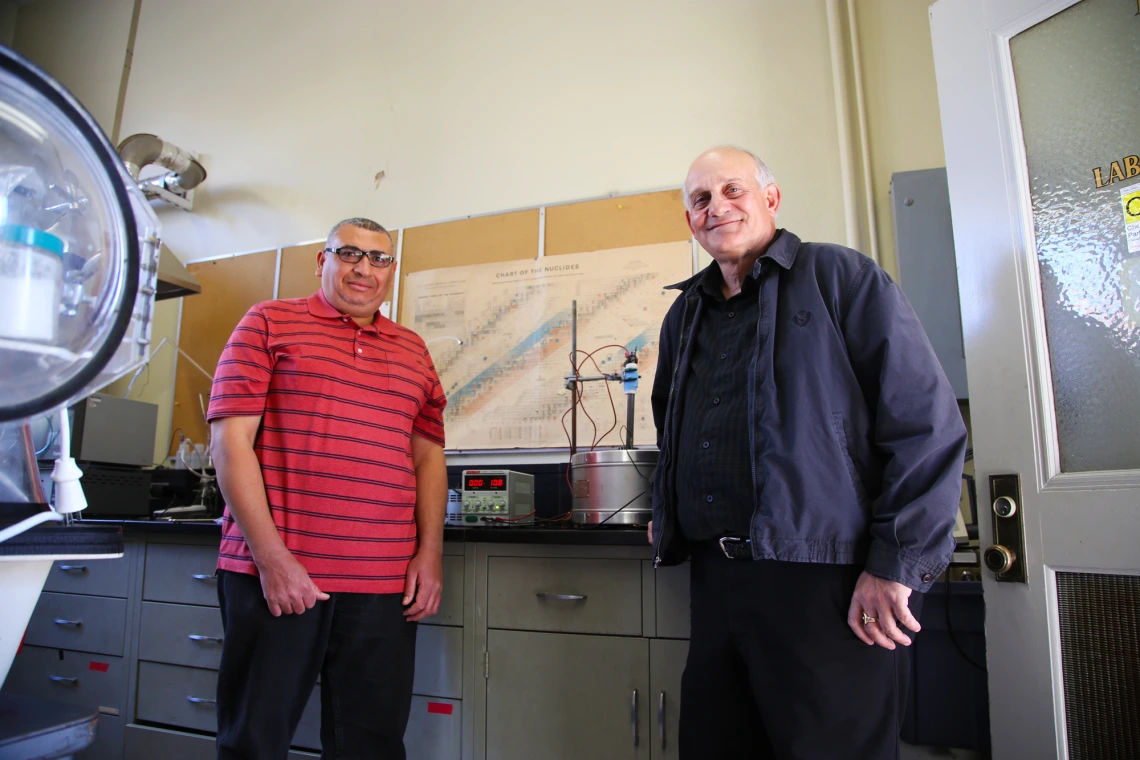Answering the Corrosion Conundrum

UA Startup to Commercialize High-Temperature Electrode Technology
TUCSON, Ariz. – The metal alloys used in pipes corrode faster the higher the temperature of the material that flows through them. Industries like metal refining, smelting and solar energy move molten salts heated to upwards of 1500 degrees Ferenheit or more – about the temperature of orange-hot molten rock – through systems of such pipes. While the applications for molten materials are developing quickly, the ability to innovate has been slowed due to the rapid corrosion of the metal pipes that contain such systems.
This process, called galvanic corrosion, occurs because of the voltage differential between the pipe’s alloys and the molten material within; the bigger the difference in voltage between the two, the faster the corrosion.
To solve this corrosion conundrum, University of Arizona College of Engineering Professor Dominic Gervasio, Ph.D., and Principal Research Specialist Hassan Elsentriecy, Ph.D. from the Department of Chemical and Environmental Engineering, in collaboration with Peiwen “Perry” Li, Ph.D., from the Department of Aerospace and Mechanical Engineering, have invented a new breed of sensor – a reference electrode – designed to work in these ultra-high temperature environments.
“We needed a reference electrode that worked in our molten salt processes, but none were available,” says Gervasio, “so we invented one that can be used in solar power, nuclear reactors, petroleum refining applications, and others.”
Funded by the Department of Energy and serial entrepreneur and co-inventor Abraham Jalbout, Ph.D., the team worked with Tech Launch Arizona, the office of the UA that commercializes the inventions stemming from University research, to patent the technology and bring it to market via a startup company, Caltrode.
The company’s primary technology is a specialized electrode that sits inside pipes transporting these molten materials and monitors the voltage differential between the pipes and their lava-hot contents. With this information, operators can fine-tune the mix of the molten salts within the pipes to lower that differential to practically zero, greatly reducing the rate of galvanic corrosion and increasing the life of system components.
"The ability to make such measurements represents a breakthrough in several major industries, from natural resources to corrosion,” says Jalbout. “The technology is ready for industry implementation; it’s a very robust and practical solution for many major issues."
“A technology that allows for this kind of corrosion monitoring and on-the-fly adjustment is a real game-changer for many industries,” says Tech Launch Arizona’s Licensing Manager for the UA College of Engineering, Bob Sleeper. “With this device, can significantly increase the life of these pipes.”
Jalbout also collaborated with the same inventor team and Tech Launch Arizona to commercialize a related technology for refining copper from copper ore using molten salts; that company, MetOxs Electrochemical, will deploy Caltrode’s electrode technology in its systems.

